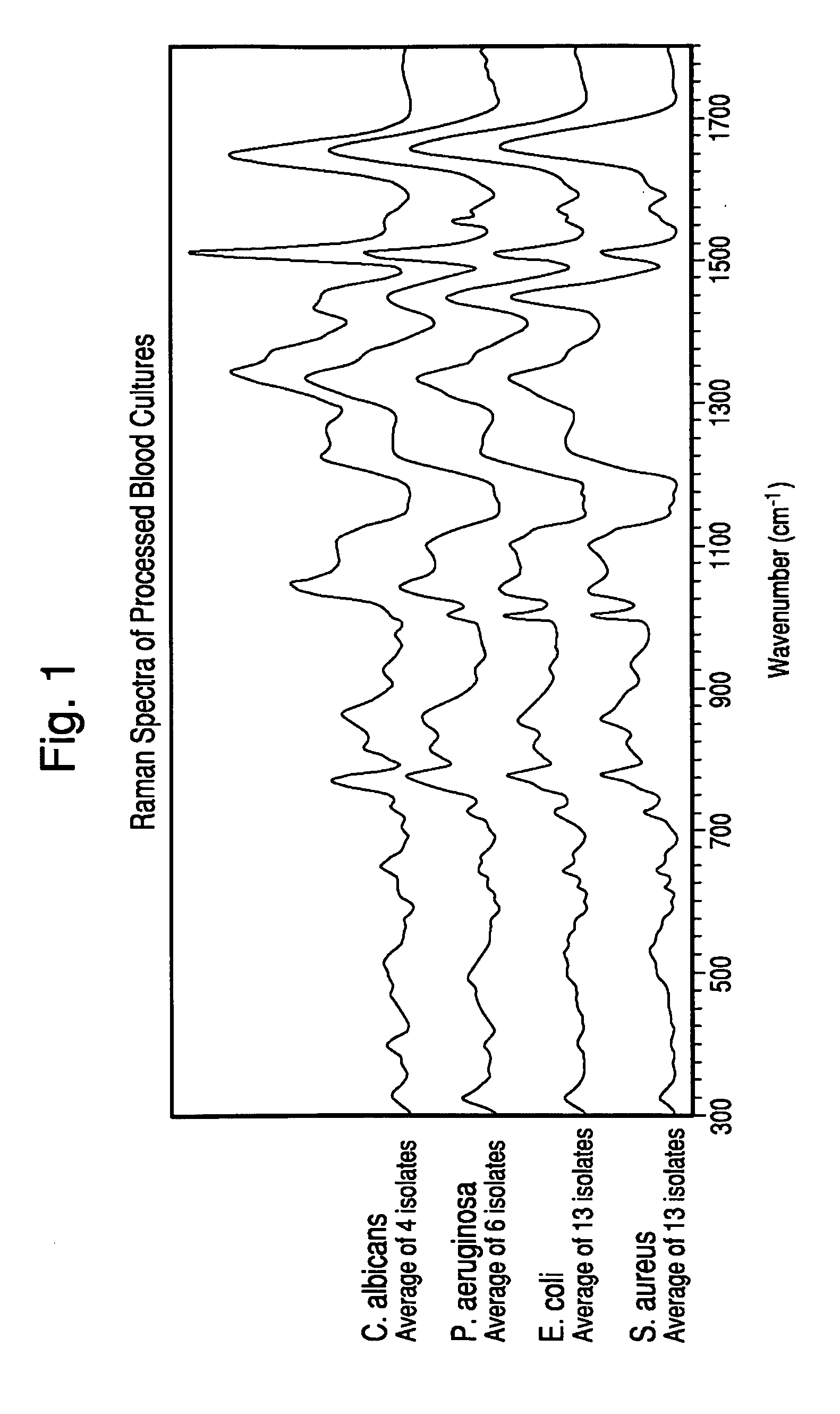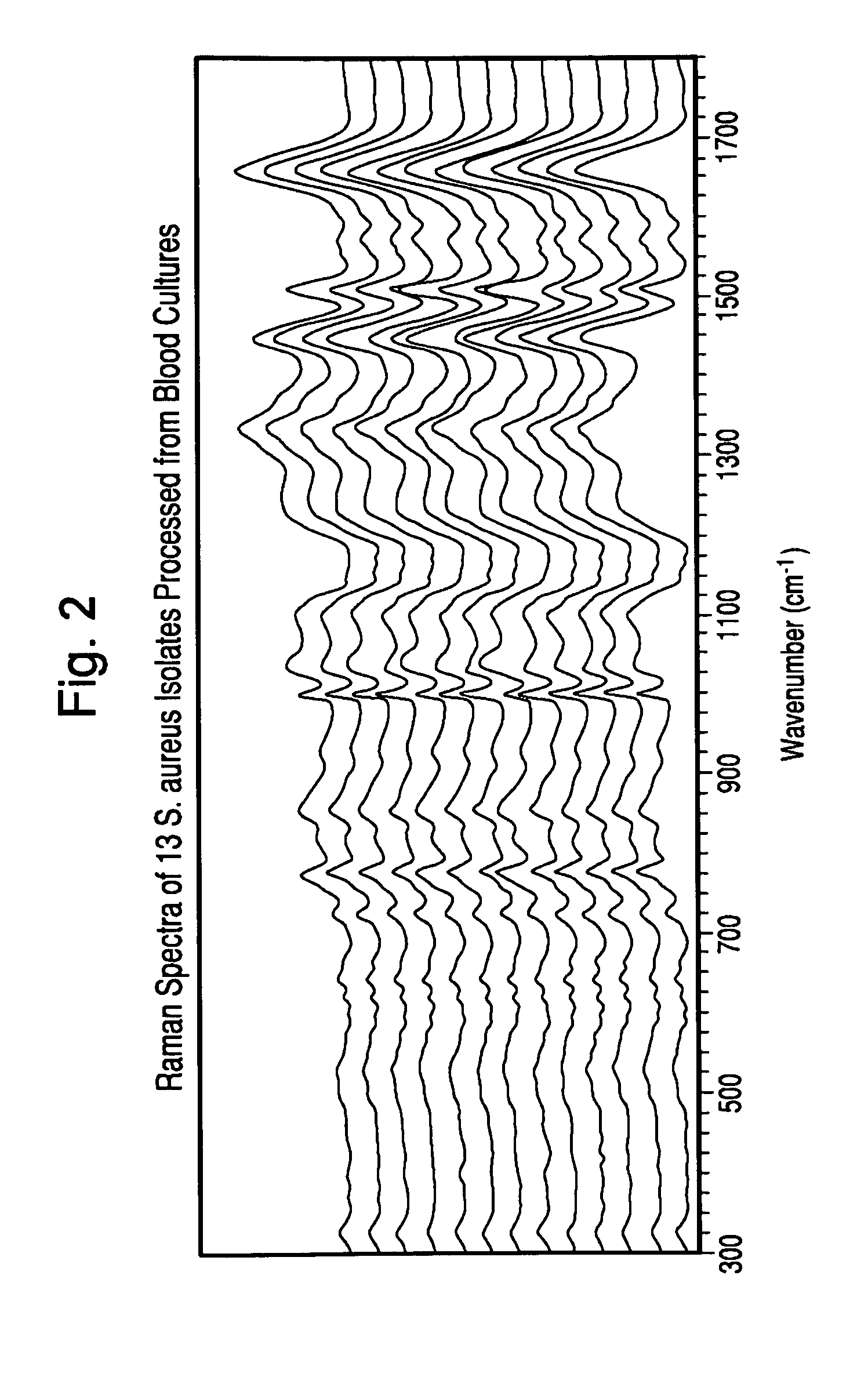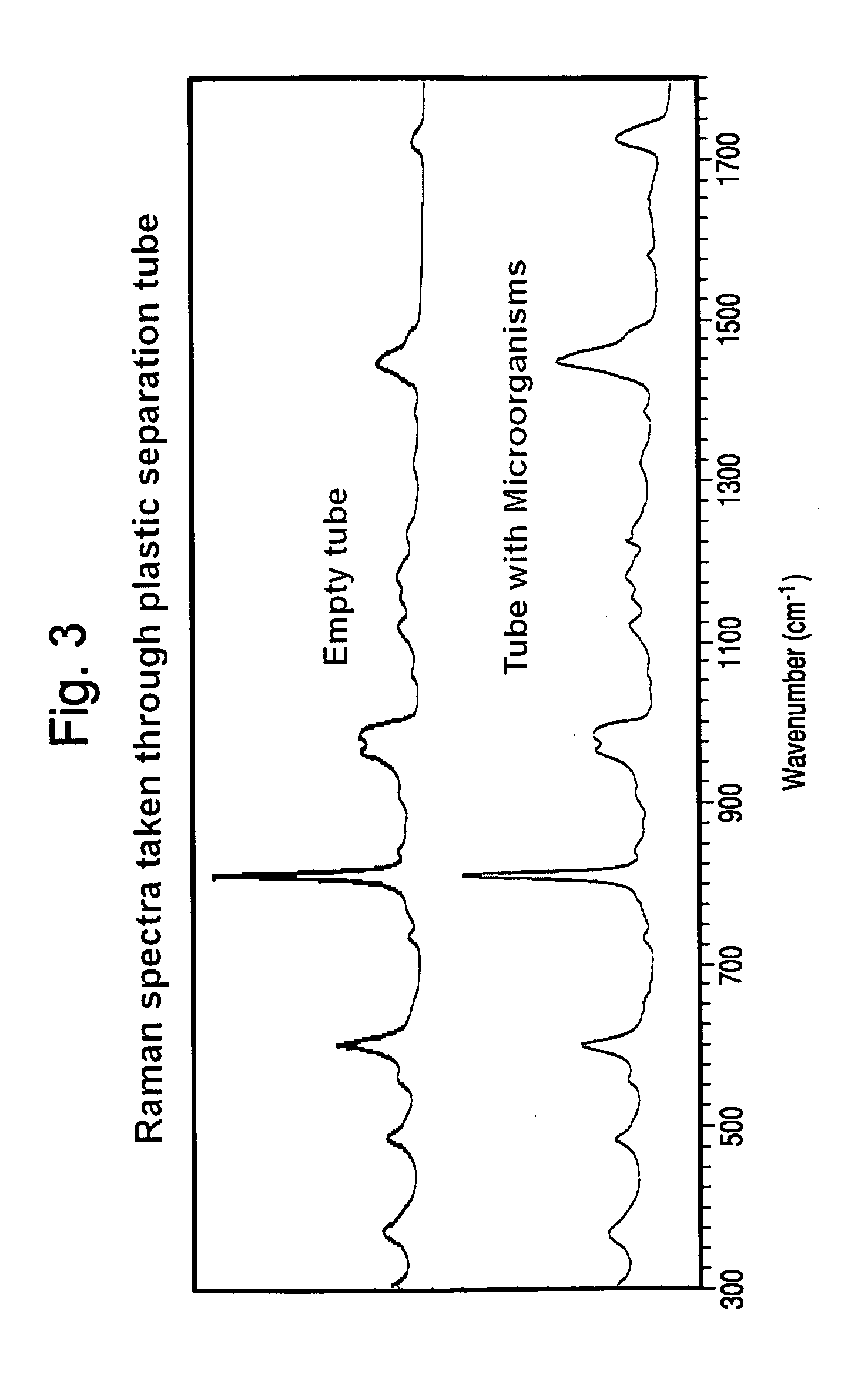Method for separation, characterization and/or identification of microorganisms using raman spectroscopy
a raman spectroscopy and microorganism technology, applied in the field of methods and systems for detecting, isolating and/or identifying microorganisms in samples, can solve the problems of bloodstream infection, high morbidity and mortality, and take several days to perform, so as to reduce the risk of handling infectious materials and/or contaminating samples, the effect of characterization and/or identification of microorganisms is faster, and the diagnosis is faster
- Summary
- Abstract
- Description
- Claims
- Application Information
AI Technical Summary
Benefits of technology
Problems solved by technology
Method used
Image
Examples
example 1
Lysis-Centrifugation Method for Identification of Microorganisms from Blood Cultures by Raman Spectroscopy.
[0115]Microorganisms were “seeded” at a low inoculum into BacT / ALERT® SA bottles containing 10 mLs of human blood. Blood culture broth samples were removed from bottles within a few minutes of being flagged positive by the BacT / ALERT® 3D Microbial Detection System. Broth samples were processed to separate microorganisms from blood and media components that could interfere with subsequent analysis as follows:
[0116]4.0 mL of broth from freshly positive blood cultures was combined with 2.0 mL Lysis Buffer (0.45% Brij® 97 in 0.3M CAPS, pH 11.7), vortex mixed for 5 seconds and then incubated in a 37° C. waterbath for 90 seconds. After incubation, 0.95 mL of lysate was layered on top of 0.5 mL of density cushion (14% w / v Iohexol, 0.005% Pluronic F-108 in 10 mM Hepes, pH 7.4) in each of four 1.5 mL conical centrifuge tubes. All four tubes were then centrifuged for 2 minutes at 10,000 ...
example 2
Analysis of Microorganism Specimens Processed from Positive Blood Cultures with Lysis-Centrifugation by Raman Spectroscopy.
[0118]Specimens processed according to the procedure in Example 1 were rapidly thawed at 37° C. (if previously frozen), mixed gently. A portion of the specimen was kept undiluted and the remainder was diluted to 1:2 in purified water. One microliter of each diluted and undiluted specimen was applied to the first surface of a gold-coated microscope slide and allowed to dry under ambient conditions.
[0119]After drying, 25 spectra in a 5×5 grid pattern were acquired for each of the dried specimens with a Model RxN1 Raman microscope (Kaiser Optical Systems Inc., Michigan) at an illumination wavelength of 785 nm. The microscope was equipped with a 40× objective lens, the laser power was set to 400 mw, and each of the 25 individual spectra was acquired with a 5 second accumulation time.
[0120]After acquisition, the spectra were preprocessed to perform dark subtraction, ...
example 3
Non-invasive Analysis of Microorganism Specimens Processed from Positive Blood Cultures with Lysis-Centrifugation by Raman Spectroscopy.
[0124]Microorganisms were “seeded” at a low inoculum into BacT / ALERT® SA bottles containing 10 mL of human blood. Blood culture broth samples were removed from bottles within a few minutes of being flagged positive by the BacT / ALERT® 3D Microbial Detection System. The samples were treated as follows:[0125]1. A 2.0 mL sample of positive broth was mixed with 1.0 mL of selective lysis buffer (0.45% w / v Brij® 97+0.3M CAPS, pH 11.7), then placed in a 37° C. water bath for 1 minute.[0126]2. A 1.0 mL sample of lysate was overlayed onto 0.5 mL of density cushion (24% w / v cesium chloride in 10 mM Hepes ph 7.4+0.005% Pluronic F-108) contained in a custom-built optical separation tube. A polypropylene ball was present on the surface of the density cushion to facilitate loading without disturbing the two aqueous phases.[0127]3. The optical separation tube was s...
PUM
| Property | Measurement | Unit |
|---|---|---|
| temperature | aaaaa | aaaaa |
| temperature | aaaaa | aaaaa |
| temperature | aaaaa | aaaaa |
Abstract
Description
Claims
Application Information
 Login to View More
Login to View More - R&D
- Intellectual Property
- Life Sciences
- Materials
- Tech Scout
- Unparalleled Data Quality
- Higher Quality Content
- 60% Fewer Hallucinations
Browse by: Latest US Patents, China's latest patents, Technical Efficacy Thesaurus, Application Domain, Technology Topic, Popular Technical Reports.
© 2025 PatSnap. All rights reserved.Legal|Privacy policy|Modern Slavery Act Transparency Statement|Sitemap|About US| Contact US: help@patsnap.com



